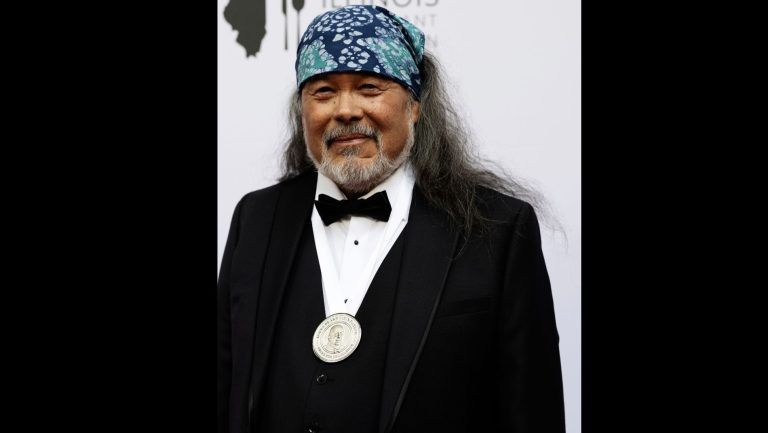Among the big wins in athletic competition this summer is the victory by the Haudenosaunee Nationals at the Pan-American Women’s Lacrosse Championship. They are first time medalists at the senior level and their win over Puerto Rico has far-reaching implications. We’ll hear from a player and a coach for the team and take the opportunity to catch up with some other notable Native athletes, from a Chickasaw professional boxer to the Diné college swimmer.
Past Shows
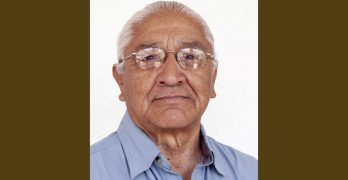
Monday, August 18, 2025 — Native in the Spotlight: Michael Steven Wilson
Michael Steven Wilson (Tohono O’odham) was a lay pastor on the Tohono O’odham Nation in the early 2000s when he started putting out water for migrants crossing the U.S.- Mexico border. He considered it a religious and ethical calling, but it put him at odds with U.S. immigration officials, his church, and his own Native nation. Growing up in Tucson, Ariz. in the 1950s, Wilson endured racism and poverty. He witnessed injustice in Central America while serving in the military — and he confronted questions about his Christian faith while in seminary school in the 90s. His experiences and observations informed his decision to help relieve the suffering of the migrants risking their lives to cross the Sonoran Desert. They are also documented in the memoir, “What Side Are You On?” Wilson is our August Native in the Spotlight.
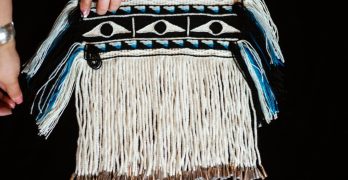
Friday, August 15, 2025 – A preview of the 2025 SWAIA Santa Fe Indian Market
After 103 years, the Santa Fe Indian Market remains the biggest draw for Native artists, potters, and jewelry makers as well as those who appreciate and collect their work. More than 1.000 juried participants come from hundreds of Native communities, offering a hugely diverse range of inspiring work. We’ll take a small sample of that creativity and check in on the outlook for Native arts and arts education.
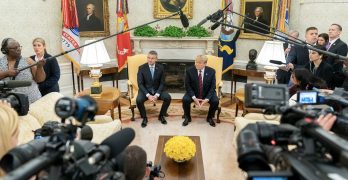
Thursday, August 14, 2025 – Getting at the truth: Indigenous journalists’ unique role in reporting
News consumers have a constant stream of information at their fingertips, but how reliable is it and how do people check the facts? Indigenous journalists are a means to bring balanced viewpoints to newsrooms that typically have limited interaction with Indigenous populations. As the annual gathering of the Indigenous Journalists Association gets underway in Albuquerque, N.M., we’ll discuss how journalism is changing and how Indigenous journalists are responding to new pressures for transparency, fact-checking, and bias.
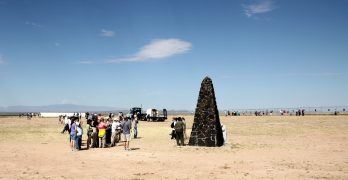
Wednesday, August 13, 2025 – Native people paying the price for 80 years of nuclear development
The summer of 1945 saw three nuclear explosions that ushered in a new era of experimentation, development, and fear when it comes to the potential for such a powerful weapon. Native people are among those suffering the most from the consequences of that path. The first test of the atomic bomb at the Trinity site in New Mexico, and the subsequent use of the bombs on Hiroshima and Nagasaki, signaled the U.S. Government’s new push to develop nuclear weapons, fueled by millions of tons of uranium ore mined near Native land in New Mexico and Arizona. And ongoing nuclear tests exposed thousands of Native people in the Southwest and in Alaska to dangerous levels of radiation. We’ll explore the ongoing effects on Native people of nuclear weapons and power development, in this encore presentation.

Tuesday, August 12, 2025 – The outlook for tribal gaming
Another year and another record revenue report for the tribal gaming industry. The annual report by the National Indian Gaming Commission finds slot machines, table games, sports betting, and other enterprises reaped $43.9 billion in 2024. That’s up more than $2 billion from the previous year. But there are potential setbacks on the horizon that could affect gaming, including flagging consumer confidence, confusing foreign trade policies, and federal government’s diminished regard for tribal sovereignty. We’ll get a status update and a look ahead for tribal gaming.

Monday, August 11, 2025 – Bureaucracy, funding uncertainty delay solutions for clean drinking water
Hopes to fix the Santee Sioux Nation’s lack of clean drinking water faded as federal funding for a pipeline project is increasingly tangled in government turmoil. Tribal citizens are forced to drink bottled water to avoid the high levels of manganese in well water. On the Navajo Nation, dozens of people’s water wells are contaminated with chemicals, like benzene, associated with the oil and gas drilling industry. There are many mysterious, uncapped wells that could be contributing to the problem. They are just two of the problems tribal citizens are having when it comes to accessing the most basic resource.
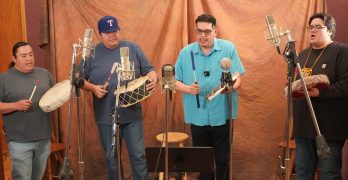
Friday, August 8, 2025 – Lakota project breathes new life into Chief Sitting Bull’s songs
Sitting Bull is remembered for strong leadership and resistance against the U.S. government, but a series of songs by and about him reveal another side to the renowned Lakota leader. Courtney Yellow Fat (Standing Rock Sioux Tribe) has been sifting through oral and written history to identify the songs that are known to the tribe, but only recently attributed to Sitting Bull. Yellow Fat and others are recording those songs through the Densmore/Lakota Songs Repatriation Project.
And Hopi radio station KUYI is marking 25 years on the air. The celebration comes amid new uncertainty about the future of many public and tribal radio stations. We’ll talk with the station manager about the milestone for the station and the role community radio plays for Hopi citizens.

Thursday, August 7, 2025 – Is Native history patriotic enough for history class?
Some Native Americans are already bracing for next year’s semiquincentennial with worries about how patriotism might cloud historical accounts from a Native perspective. Now, the Trump Administration is promoting a program to teach “the first principles of the Founding” in classrooms. The program uses money previously meant to help low-income and underserved students. It’s part of President Donald Trump’s push to end what he says is the “radical indoctrination” of public school students. We’ll talk about what’s being done to include Native voices into an accurate accounting of history.

Wednesday, August 6, 2025 – Native people paying the price for 80 years of nuclear development
The summer of 1945 saw three nuclear explosions that ushered in a new era of experimentation, development, and fear when it comes to the potential for such a powerful weapon. Native people are among those suffering the most from the consequences of that path. The first test of the atomic bomb at the Trinity site in New Mexico, and the subsequent use of the bombs on Hiroshima and Nagasaki, signaled the U.S. Government’s new push to develop nuclear weapons, fueled by millions of tons of uranium ore mined near Native land in New Mexico and Arizona. And ongoing nuclear tests exposed thousands of Native people in the Southwest and in Alaska to dangerous levels of radiation. We’ll explore the ongoing effects on Native people of nuclear weapons and power development.
Search Our Archive
NAC @ Santa Fe Indian Market
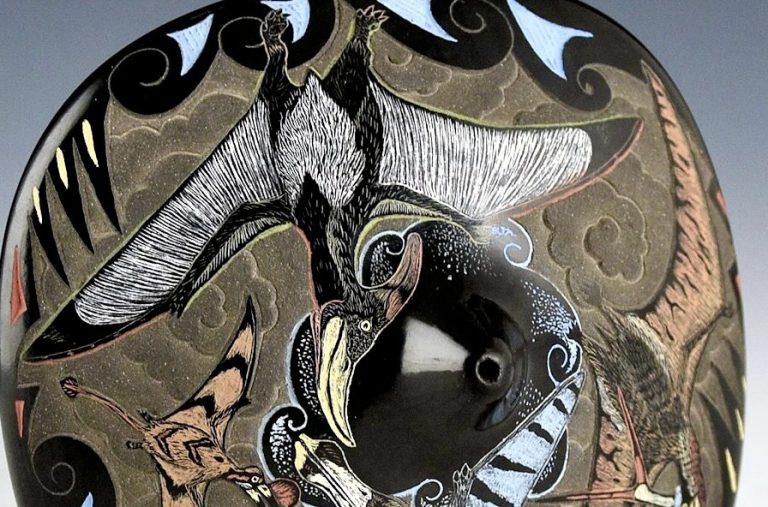
Distinctly Native American artwork, fashion, and films converge again for the annual Santa Fe Indian Market, with at least 1,000 booths and somewhere around 100,000 visitors. Native America Calling is live from Santa Fe, hearing from Southwestern Association for Indian Arts representatives, 2023 Best In Show winner Jennifer Tafoya, curators from the Native Cinema Showcase, and others to get a preview of the largest juried Native art market in the world.
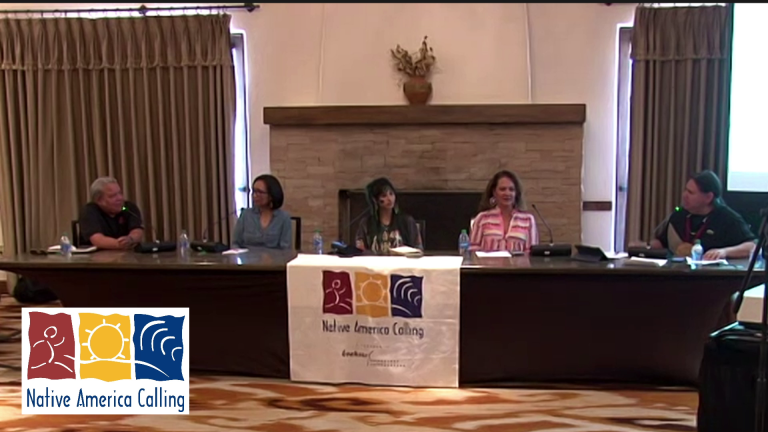
Listen back to Native America Calling’s live broadcast from the Santa Fe Indian Market featuring host Shawn Spruce and guests Dawn Houle (Chippewa Cree from Rocky Boy Montana), Mandolin Rain Song (Taos Pueblo), Jennifer Johns (Diné), and Jason Garcia (Santa Clara Pueblo).
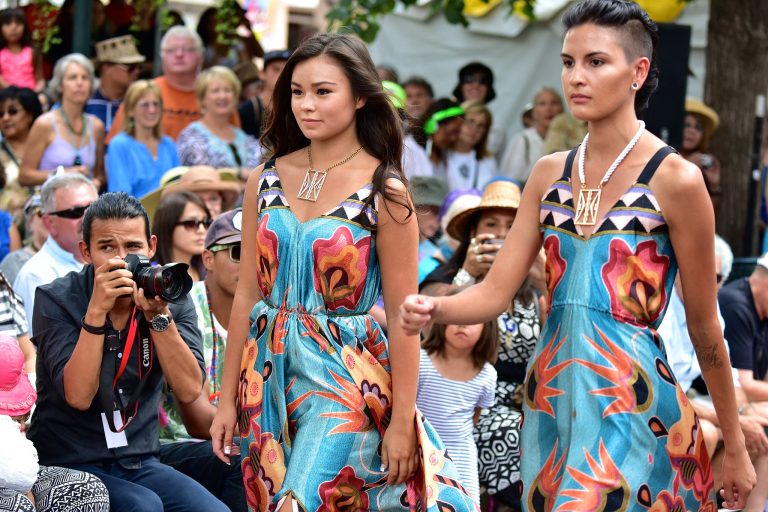
Artists from hundreds of Native nations are tending to their booths in the streets of Santa Fe, selling works they’ve labored for months to prepare. SWAIA’s Santa Fe Indian Market has come a long way in 100 years. Today on Native America Calling, Shawn Spruce is live from Indian Market for a second day with Dr. Suzanne Newman Fricke, director of Gallery Hózhó at Hotel Chaco; Dr. Robert Martin (Cherokee), Institute of American Indian Arts president, to get a feel for what’s in store for the next century; Amber Dawn Bear Robe (Siksika Nation), Indigenous Fashion Show producer for the Southwestern Association for Indian Arts and art history professor at the Institute for American Indian Arts; Dr. Jessica Metcalfe (Turtle Mountain Chippewa), owner of Beyond Buckskin; and Kristin Gentry (Choctaw), artist, photographer, writer, and curator.
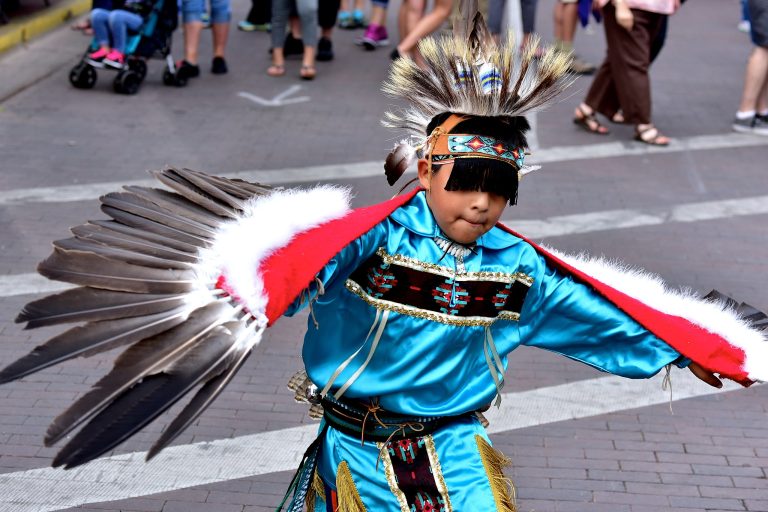
It survived the Termination Era, The Depression, a World War, and, most recently, a pandemic. The Southwestern Association for Indian Arts marks the 100th Santa Fe Indian Market, a place to buy works directly from artists, to experience the creative vision of Native designers, and watch films by Indigenous filmmakers.
Today on Native America Calling, Shawn Spruce is live from the Market to get a rundown of this year’s schedule and reflect on the evolution of this major achievement of Native creativity and commerce with Cindy Benitez, program manager for the Native Cinema Showcase by the National Museum of the American Indian; film director Fritz Bitsoie (Diné);Stephine Poston (Pueblo of Sandia), board chair for the Southwestern Association for Indian Arts; and Leah Salgado (Pascua Yaqui), Chief Impact Officer for Illuminative.
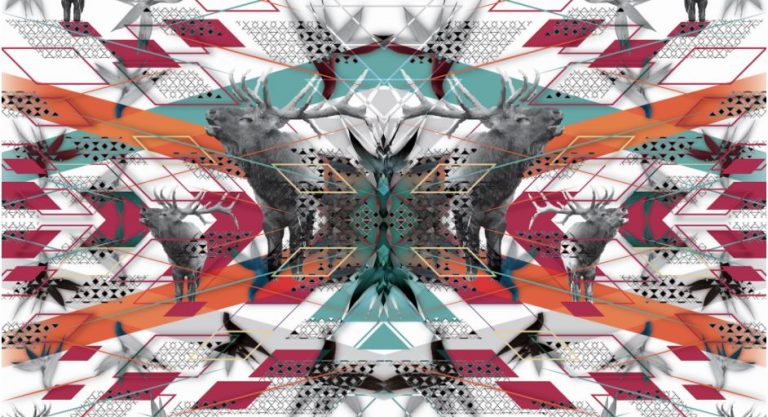
Normally this week, thousands of Native artists would be setting up for the annual Santa Fe Indian Market by the Southwestern Association for Indian Arts. Instead, the event—in its 99th year—is taking place only online. Organizers are appealing to potential market buyers with virtual tours of artists’ studios, concerts, panel discussions, films, fashion shows and […]



